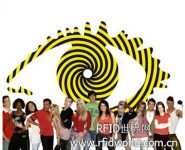
RFID enters the British reality TV show Celebrity Big Brother
[ad_1]
When the British reality TV show Celebrity Big Brother (a scene of 11 well-known public figures living together in the same room) was broadcast for the new season this year, the producer used a new tool to further collect data to entertain the public: Namely radio frequency identification technology (RFID). Program production company Endemol can use this technology to provide viewers with more detailed information about participating celebrities. Participants include singer LaToya Jackson, rapper Coolio, and British weather broadcaster Ulrika Jonsson.

The famous British reality TV show Celebrity Big Brother
Every celebrity participating in the Celebrity Big Brother program wears a battery-powered RFID tag, which is read by a reader scattered in the Big Brother room. The program producer collects and analyzes the read data, and uses charts and graphs to show the location of the participants and who they are with. This system is provided by RFID technology provider Wavetrend.
After a year of gap, when the production of the new season of the show started in 2009, producers were looking for new ways to provide viewers with more details and entertainment, so RFID entered their field of vision. Wavetrend has previously provided personnel monitoring data for other television programs in the UK, but it is better known for tracking solutions for company servers and other IT equipment.
Wavetrend spent three weeks designing and installing RFID systems in about 10 rooms at the show, said the company’s president, Saleem Miyan. The installation of the system was completed on December 15th last year, and it was officially launched when the program first broadcast to 6 million viewers on January 4th this year.
In order to display and track the location of participants 24 hours a day in the 3-week program, Wavetrend installed a total of 15 readers on site. Wavetrend installed several readers on the ceiling of a large room; in order to locate celebrities outside the house and in the park, the company also installed readers on the roof. The project equips each actor with a miniature microphone, which can be worn around the neck or tied to the belt. Wavetrend embeds an RFID tag in each wireless microphone, and the reader reads the ID code of the tag’s RFID chip to identify the wearer.
The tag continues to send data to the Wavetrend reader, which obtains the tag signal, sends its ID code to an Ethernet hub via Ethernet, and then forwards it to a server. Wavetrend’s AssetTrace software collects and translates data, and can locate the position of the tag (with an accuracy of 1 meter) based on the strength of the tag signal measured by the reader. The AssetTrace system shows the room map to the program producer on the screen, where the red dot indicates the real-time location of each participant.
Producers use software to analyze location data, such as judging the time a person spends in a place (such as a bed or a park) and the time spent with other people.
Supporters of these celebrities can see the location of each participant in real time via the Internet, although Big Brother does not yet provide this service.
Collett stated that he hopes RFID can add details that the original 35 cameras could not provide. “Theoretically, if we sit in front of the screen and keep watching, we can get all the information through the camera. But with this system, we don’t need this,” he said.
So far, producers have begun to analyze RFID data, such as the time participants spent in smoking rooms or other specific locations. This information is likely to be entertaining, Collett said, for example, if a celebrity claims to have quit smoking, but the data indicates that he has been in a smoking area for too long, then this is very questionable.
[ad_2]




